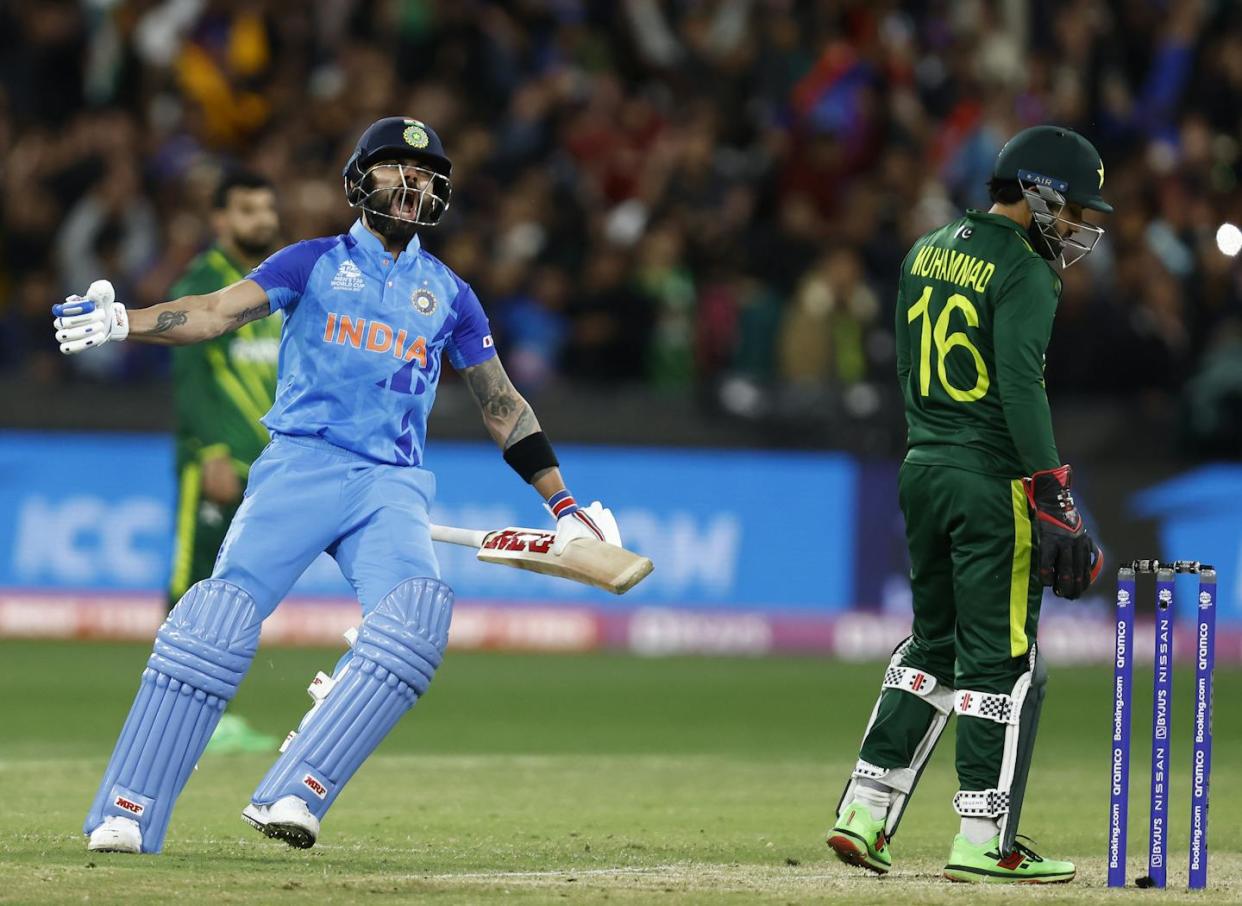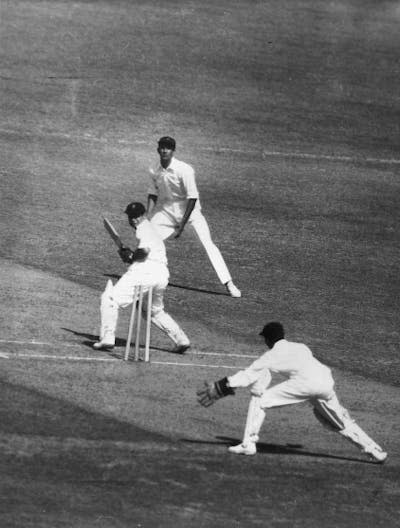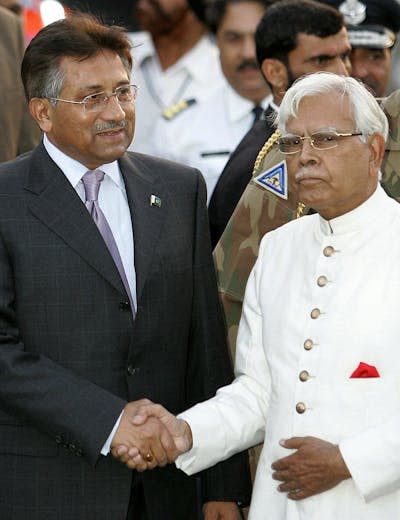Why India and Pakistan’s T20 cricket showdown in New York is such a big deal

Americans might be surprised to learn that cricket – not baseball, nor football – holds the title of the nation’s first modern team sport. European immigration fueled the sport’s popularity in the first half of the 19th century, and Abraham Lincoln reportedly watched a cricket match in 1859.
Cricket’s popularity waned after the Civil War. Troops had taken to the new sport of baseball, which was easier to play on makeshift fields, and the sport eventually emerged as the national pastime.
Nevertheless, cricket is the second-most-watched sport in the world after soccer. And with the U.S. and the West Indies cohosting the T20 World Cup, organizers hope the sport can gain some traction among American audiences.
The version of the game being played in the tournament, known as T20, lasts about three hours. This is shorter than the game’s longer formats: One-day international matches usually last between seven and eight hours, while test matches can last up to five days.
The tournament kicked off on June 1, 2024, with a victory for the U.S. against neighboring Canada. But it’s a match yet to be played that’s generating the most buzz, especially among those of South Asian descent: the India-Pakistan showdown.
Matches between the two nations usually attract massive audiences. More than 400 million people around the world watched the India-Pakistan 2011 World Cup game. By comparison, about 125 million people tuned into Super Bowl LVIII in 2024.
Set to take place on June 9, 2024, on Long Island, the match is the next chapter in one of the most intense rivalries in sports, one that’s deeply entangled with the two nations’ complex geopolitical history.
The roots of a rivalry
Cricket became popular in India during the British Raj, the period of the United Kingdom’s direct rule of the subcontinent that lasted from 1858 to 1947.
British sailors introduced the sport, with the first recorded match taking place in western India in 1721.
Scholars argue that the British promoted cricket in India as part of an Anglicization policy, which encouraged Indians to adopt English customs and values. Promoting cricket was one way for the British to instill loyalty to the British Empire among Indians, thus aiding their colonial governance.
Following the partition of India in 1947 and the creation of Pakistan, both nations formed their own national cricket teams.
Pakistan was created as a separate nation for Muslims, who feared religious persecution and sought political and cultural autonomy. But the partition was deeply painful, marked by a violent and traumatic division based largely on religious lines, with Hindus and Sikhs migrating to India and Muslims resettling in Pakistan.
The process left a deep wound in both nations’ memories. In the largest population transfer in history, about 10 million people became refugees, and up to a million were killed in border massacres and riots.

In October 1952, five years after gaining independence, a Pakistani team traveled to India for their inaugural five-test match cricket series. A standard test cricket match spans five days, with teams playing six hours each day, broken up with breaks for lunch and tea.
The first cricket series between the nations, which India won, was a poignant reminder of the painful partition. Many of the Pakistani team officials, fans and players who made the journey from Pakistan to Amritsar, India, retraced the route they had taken just five years prior.
India and Pakistan’s postcolonial relationship remains tense. There have been several wars, most of which have taken place over the disputed Kashmir region, a strategically important area that each nuclear-armed nation has claimed as its own.
Cricket diplomacy
Despite a shared border, culture and history, India and Pakistan each maintain strict trade and travel restrictions on the other country. Yet citizens of each nation share a passion for cricket that transcends political divides.

Both countries have engaged in what scholars call “cricket diplomacy.”
For example, in 1987, then-President Mohammed Zia-Ul-Haq of Pakistan visited India under the auspices of attending a cricket match. But he also met with Indian officials in order to ease rising tensions between the two nations. Similarly, in the early 2000s, the Indian cricket team toured Pakistan twice as then-Prime Minister Manmohan Singh of India tried to foster peace with his neighbor. And in 2005, then-President Pervez Musharraf of Pakistan visited New Delhi to watch a cricket match between the two countries.
Following the 2008 Mumbai attacks, however, when terrorists allegedly linked to Pakistan killed over 160 people in Mumbai, the Indian government barred its cricket team from touring Pakistan, even for international tournaments. Since 2009, Pakistani players have also been excluded from participating in the hugely popular Indian Premier League, which draws star cricketers from England, the West Indies and Australia.
All eyes on Nassau County
Nassau County, just east of New York City on Long Island, was selected to host T20 matches for a reason.
Hundreds of thousands within the South Asian diaspora call the New York City metro area home, including more than 700,000 people of Indian heritage.
South Asian immigrants and their descendants, long mocked and stereotyped in U.S. media, increasingly hold positions of influence, whether it’s Vice President Kamala Harris, Google CEO Sundar Pichai or actor Kal Penn.
Because cricket matches between India and Pakistan are few and far between, the cheapest tickets are being sold for between US$600 and $1,200 on the secondary market. VIP tickets are going for as much as $40,000 apiece; with additional fees of nearly $10,000, the total cost exceeds $50,000.
Clearly, there’s an appetite for cricket in the U.S. As sports broadcasters and sponsors seek new audiences, the cricket-obsessed South Asian diaspora represents an untapped market. In 2023, Major League Cricket, the sport’s first American professional league, held its first season. One of its six teams is based in New York City. Another is in Dallas, a metro area that is also experiencing a surge of South Asian immigrants.
For now, cricket advocates could not have written a better script: a raucous crowd cheering on a rare matchup between cricket’s biggest rivals, taking place in the biggest media market in the U.S.
This article is republished from The Conversation, a nonprofit, independent news organization bringing you facts and trustworthy analysis to help you make sense of our complex world. It was written by: Umer Hussain, Wilkes University; M. Fahad Humayun, University of Evansville; Simran Kaur Sethi, University of Oklahoma, and Steve Bien-Aime, University of Kans
Read more:
Indian protesters pull from poetic tradition to resist Modi’s Hindu nationalism
How India came to love cricket, favored sport of its colonial British rulers
The authors do not work for, consult, own shares in or receive funding from any company or organization that would benefit from this article, and have disclosed no relevant affiliations beyond their academic appointment.


